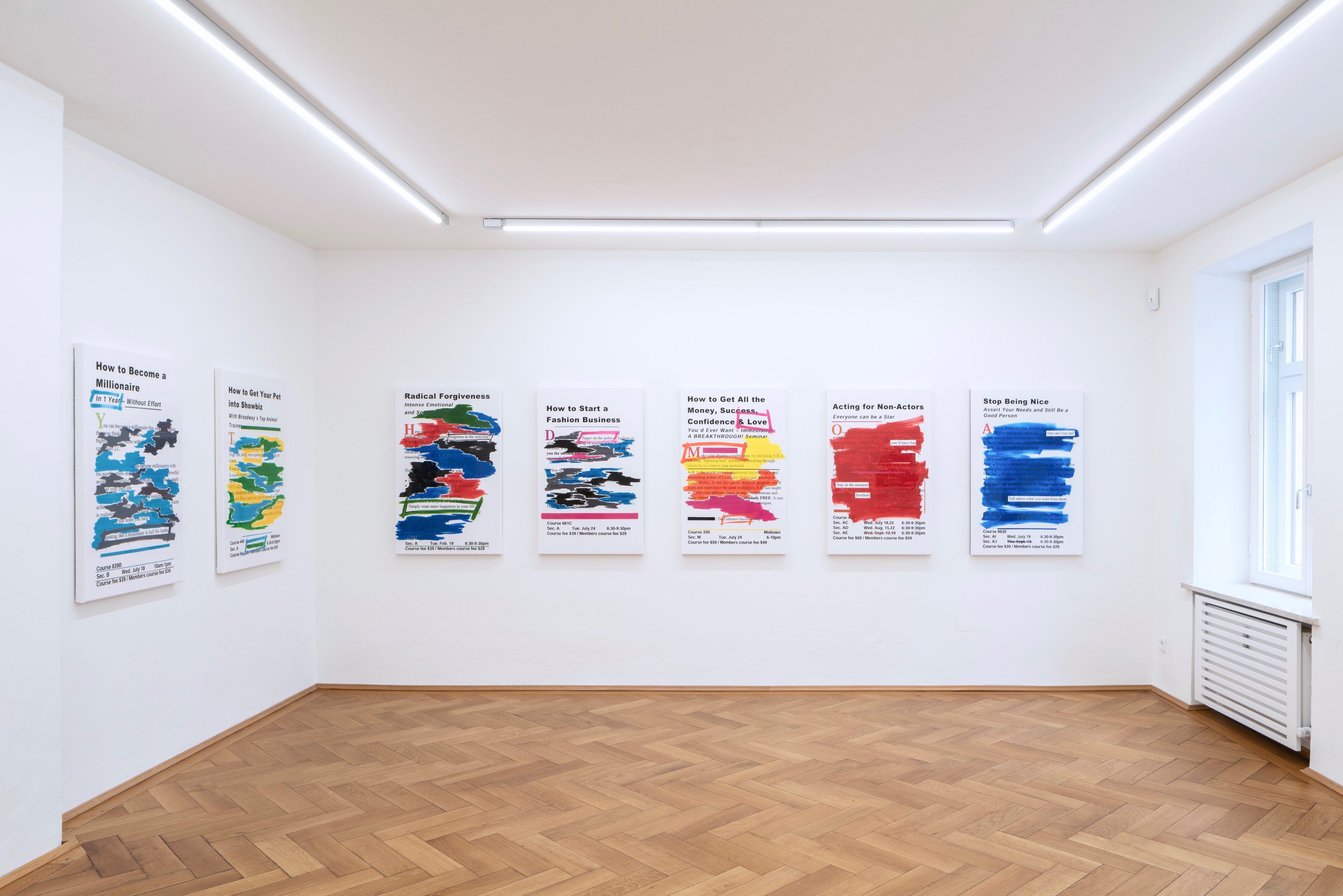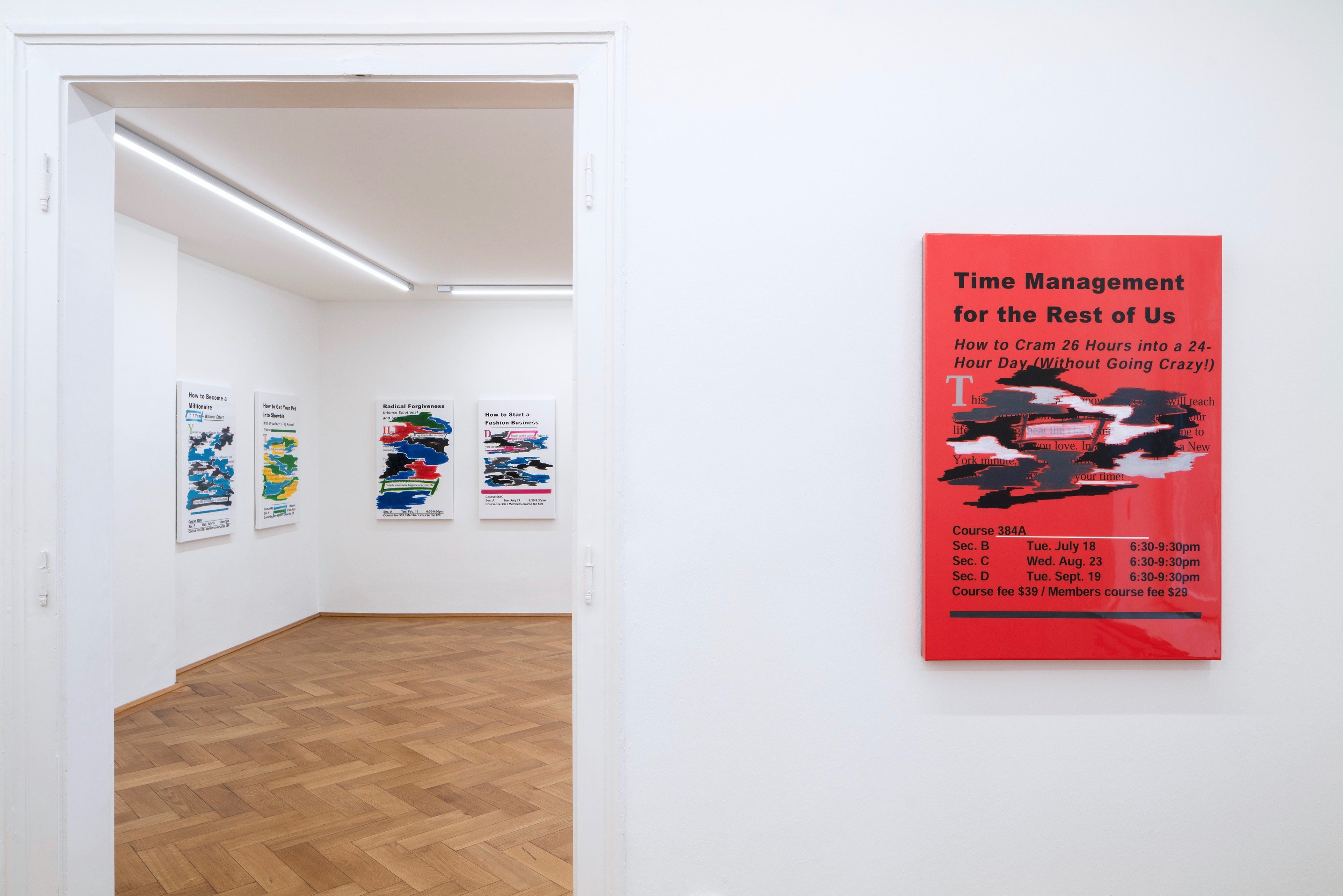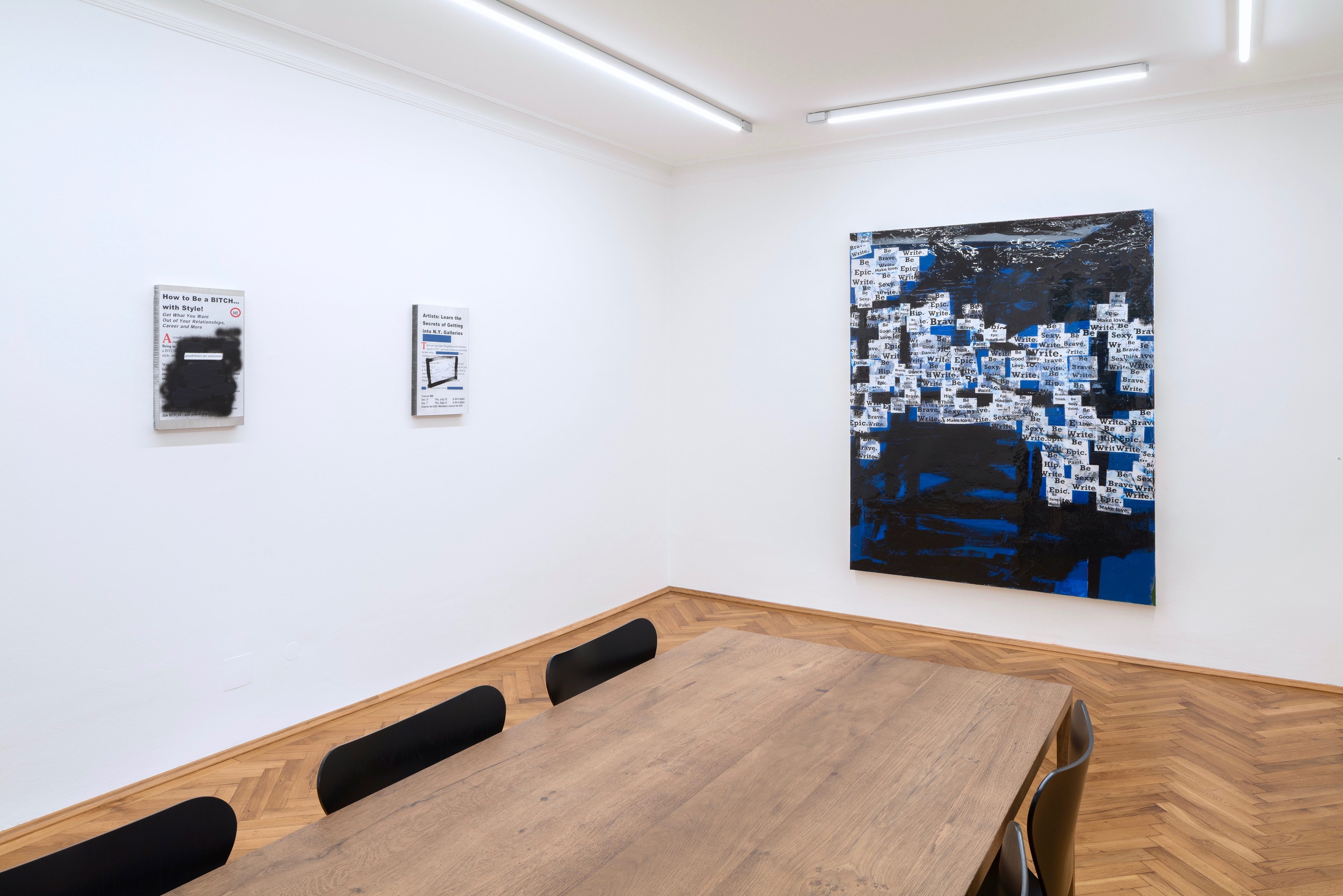Concept artist Caro Jost appropriates foreign traces, materials and memories, which she transforms into autonomous artworks of both autobiographical and social relevance. From the very beginning, compiling and archiving has been an important component of her strategy as an artist. In terms of both content and form, the artist works with collages in which she combines the materials she finds and then supplements with other techniques.
The focus of her long years of research has been on places where artists were once active. The artists hold a particular fascination for Caro Jost, above all the New York Avantgarde of the 1950s and 60s in the circles of Barnett Newman, Ad Reinhardt and Jackson Pollock. For more than 15 years, Caro Jost has been systematically tracking the great masters. The artist has achieved a great deal of recognition for her development of the “Streetprint” image type, for which she creates actual street impressions of venues that have personal, social or art historical meanings. In 2016, she further developed the concept of this group of works, appropriating original invoices of these artists’ purchases of materials in her “Invoice Paintings”.
The exhibition “walk the talk” marks Caro Jost’s first solo exhibition at Galerie Britta von Rettberg. The show emphasizes works from her new series of “Public Paintings”. In these pieces, she refers to the Summer of 2001 in New York City, where a year earlier, she had begun her career as an artist at the Art Students League. Riveted by the pulsating life in this city of winners and losers, the artist began putting together her personal archive of material and photographs. Even today, her time spent there continues to determine the paths she pursues in her work in general.
Whereas earlier on, art historical themes had been central to her work, in her new solo exhibition, Caro Jost focuses on topics of public life. In this case, she resorts to pamphlets for evening courses she had picked up and collected on the streets, in the subways, or in public places back then in New York. The artist transfers these pamphlets to the canvas as paintings, whereby she intentionally omits individual information. In a next step, she deconstructs the transferred text by hiding certain words with camouflage-like overpainting and by singling out others as catchwords. In doing this, Caro Jost comments on the content of advertising and reveals a critically ironic and humorous attitude towards the promises these evening classes make. The short, catchy texts with memorable slogans that directly appeal to us have been tailored to the everyday language of the public. They reflect the social climate of the Summer 2001 prior to 9/11. Whereas pamphlets are increasingly disappearing from our everyday lives, the urge for self-improvement revealed in the messages of these courses offered is more present than ever before, above all in the social media.
Because Caro Jost detaches the text from its original context, these old documents, most likely printed for a large circulation and mass-distribution back then, are now one-of-a-kind attests to their time. As she works, Caro Jost not only appropriates the aesthetics and language of the ad, she also internalizes the spirit of the times inherent in these objects. Due to her archival approach and the artistic appropriation of foreign materials, artworks by Caro Jost may be brought into connection with Appropriation Art.
The various messages in her “Public Paintings” link together in the exhibition “walk the talk” to become a panorama of self perception and external perception. Likewise in the exhibition installation, the artist takes up the theme of self-reflection in a mirror work that is 1.80 meters high and 2.50 meters wide and extends across the entire wall of one of the exhibition rooms. This mirror not only reflects the exhibition space opposite it as well as the visitors to the gallery, but also the street outside, which creates a reference to public space. To accompany this, the artist is showing photographs from 2001, in which she captured her impressions of New York City with a digital camera. The photos had been projected from there to two freestanding screens situated at two public terminals in Munich Airport. By means of Internet communication, which was still a novelty back then, she allowed travelers to take part in her experiences in this city of winners and losers.





